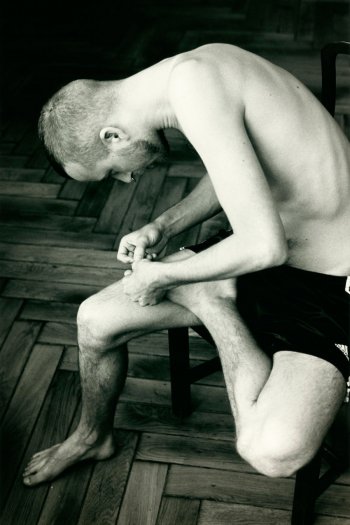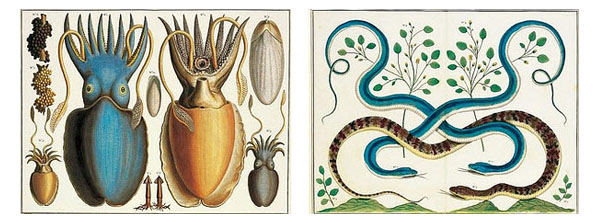The Measure of Interest
“How do you measure something as nebulous as interestingness, and indeed, from the point of view not of the individual but of the community? Although the set of 500 photos varies from day to day, on any one day they are the same for all users, regardless of individual members’ own particular interests. You personally may be fascinated by deadpan photos of industrial buildings or elaborately staged compositions of domestic life gone awry, but clicking on flickr’s Explore button will deliver you the same mix of cityscapes, furry creatures and soulful women that it does for your virtual neighbors. That said, the interestingness algorithm does work on more targeted subsets of images. You can sort your flickr search results for cast-iron buildings or water droplets on the basis of interestingness.” Stefanos Christoforos
Breach of Close
by Stefanos Christoforos

 ATHENS Greece—(Weekly Hubris)—7/23/2012—Not being an industrial spy or a corporate lawyer, I don’t ordinarily find reading patent applications terribly interesting. But I recently spent an entire weekend happily poring over one particular patent, despite the fact that reading such documents, like eating an artichoke, is hard work and offers only delayed gratification. The heart of the invention—the summary description—lies deep within layers of nested dependent claims of apparatuses and methods, each of which, however, offers its own tiny bit of additional information about the invention.
ATHENS Greece—(Weekly Hubris)—7/23/2012—Not being an industrial spy or a corporate lawyer, I don’t ordinarily find reading patent applications terribly interesting. But I recently spent an entire weekend happily poring over one particular patent, despite the fact that reading such documents, like eating an artichoke, is hard work and offers only delayed gratification. The heart of the invention—the summary description—lies deep within layers of nested dependent claims of apparatuses and methods, each of which, however, offers its own tiny bit of additional information about the invention.
The patent I was studying, application no. 20060242139, was filed by Yahoo, Inc. for an “interestingness ranking of media objects.” A chunk of it covers the algorithm that flickr has developed to select the 500 photographs for its “Explore” page (and an interactive mosaic wall of thumbnail images of the daily 500 may be seen at http://interes.tingness.com/).
I had first heard about the algorithm from my friend Nikolas, who is one of the most interesting people I know and a remarkable photographer in his own right. I was immediately intrigued, which is just a fancy way of saying I was interested.
How do you measure something as nebulous as interestingness, and indeed, from the point of view not of the individual but of the community? Although the set of 500 photos varies from day to day, on any one day they are the same for all users, regardless of individual members’ own particular interests. You personally may be fascinated by deadpan photos of industrial buildings or elaborately staged compositions of domestic life gone awry, but clicking on flickr’s Explore button will deliver you the same mix of cityscapes, furry creatures and soulful women that it does for your virtual neighbors. That said, the interestingness algorithm does work on more targeted subsets of images. You can sort your flickr search results for cast-iron buildings or water droplets on the basis of interestingness.
The real power of the metric lies in its potential to query and retrieve images of interest to the individual. The patent itself suggests some ways in which this metric may be fine-tuned.
One such tweak involves using location. A photo of a bridge might be more “interesting” if it’s close to where I live or where my friends live or a place associated with other images that I’ve already tagged as favorites. This is where the big bucks lie and the ultimate reason for developing the algorithm in the first place: a better way of Googling for images, or rather I should say, flickering for images and getting relevant, user-targeted results.
The success of the metric for retrieving individualized search results depends in part on the size of the set of images over which the algorithm queries and the degree to which the images themselves are tagged with richly informative metadata. But with over five billion images and a community of users who have done much of the work of tagging the photos they upload, much of the foundation has been laid.
Google, of course, has an exponentially larger set of images, but not having an army of avid taggers it must rely on other cues to determine relevance, such as keywords in the text in which the image is embedded. When I searched for “empty chairs,” Google returned 3.16 million results. But, after the first ten pages, the results became less consistent, contaminated by images that had nothing to do with the object itself (an album cover of Don McLean’s “Legendary Songs”) though they were linguistically relevant (the image of the cover comes from a text containing the lyrics for the song, “Empty Chairs”).
At about Page 55, fewer than one in ten images actually contained an empty chair. Flickr, on the other hand, returns only 32,000 items from its “Empty Seats” group. I couldn’t muster the interest to browse to the end of the set, but there were still only chairs when I got to Page 101.
And Flickr search results may be sorted not only by relevance and recency but also by interestingness. Which brings us back to our initial question: what makes an image interesting to the community.
Curiosity, Pleasure and Investment
Interest is born of curiosity. Like a stranger’s smile at the far end of a bar, something about a book cover, the snatch of a melody, or the composition and texture of an image invites us to tarry. It beckons us to explore, to leaf through the pages of the book, to look more carefully at the picture, to stop what we’re doing and listen to the rest of the song.
It is the mind pricking up its ears. Flickr captures this “desire for more” by measuring the rate at which users click on a particular thumbnail image to see the photograph in greater detail and to read whatever information the photographer has provided about the image. This in itself doesn’t really say all that much. On its own, a click is nothing more than a stop at a painting along the path of an exhibition. (Sadly, the average museum visitor spends only eight seconds at each painting. Lest you think this is merely a case of rushing-through-the-Louvre museum fatigue, you might want to look a visitor study that was conducted at the Musée Cantini in Marseilles. The research team observed visitors to an exhibition of twelve masterpieces by Picasso and Matisse that were on loan from the Orangerie Museum in Paris. There were just twelve paintings. Twelve. By Picasso and Matisse, for God’s sake! The average time of observation of any given painting was still only 12.5 seconds.)
Interest is more than mere curiosity. A click-through rate doesn’t reveal anything about our experience once we’ve spent some time with the object that has initially aroused our curiosity. The first paragraphs of the book may be riddled with clichés, the stranger who smiled might have bad breath, and the photo could turn out to be trite upon closer observation.
If interest is to be more than fleeting, exploring the object of our curiosity must give us something—giggles or goose bumps, a tingle of pleasure or a prick of doubt, an occasion to think and make connections, something in any event that quickens us. Flickr approximates this positive feedback in its algorithm by counting the number of users who have marked a particular photo as a “favorite.”
However, interest that remains at the level of curiosity, even when it is a source of pleasure, is shallow, quick to evaporate in the heat of competing priorities. If interest is to endure, it must be cultivated, and this requires some investment on our part—of attention, time, and often money, though money is perhaps the least important. Buying a book is not the same as reading it and, much less, recommending it, and best seller lists are not necessarily the lists of the most interesting books. Since there’s no real cost in clicking on an image, and not much more in marking an image your favorite, there’s very little if no user investment.
Apart from your time, the only other resource your can commit on flickr is the universal currency of all social networks: your reputation. Some of this is already wagered in tagging favorites, which function then as a mark of identification; you are what you like. But the majority of investments in time and reputation are recorded and measured when users comment on photographs they have seen on flickr. In the language of the patent, the interestingness rank is determined in part by “the quantity of user-entered metadata concerning the media object, the number of users who have assigned metadata to the media object.” (Some bloggers have noted that the metadata captured in the ranking also concern what the uploader and not just the visitor has provided; untagged photos are generally ranked much lower than tagged ones).
Most interests have a relatively short half-life: they flag and sag and finally pass. Only a few really last. Flickr factors in the decay of interestingness, admittedly somewhat arbitrarily. It decrements the ranking a photo will accumulate over time by a factor of about two percent per day, starting from the day the image was posted. Ingenuously, this decay factor prevents a highly ranked photo from going viral, fed by an endless positive feedback loop whereby the image, precisely because of its interestingness rank, is seen by more people, who in turn are more likely to click it, mark it as a favorite and comment on it.
Explorers, Sentries, Advocates and Curators
There are comments and comments, of course. “Wow” is not the same as, “The contrasting red and blue make for a dramatic image . . . and that sun-star is a great accent mark.” Some people’s comments are more carefully considered and more informative than those of others and, in the end, “worth” more.
Length alone is not always a reliable clue to the value or relevance of a comment, and since flickr cannot parse these texts, it gives comments from members whose own photographs have been commented on—and who are thus likely to be better photographers—greater weight in the interestingness metric than those whose images have not. This may explain in part why the photographs in the 500 are technically quite accomplished even when the subject matter is not too adventurous. Flowers and sunsets figure prominently, as do beautiful women. There are cars and cats and, on one day, oddly enough, several coffee cups. But mostly they are “Ahh!” pictures, things such as dramatic bridge shots, far vistas and macro close-ups of insects.
The taste of the crowd, however, may not necessarily be mine. Sometimes they coincide, as in my enthusiasm for the highly rated TV series The Wire and Glee, but often they don’t. I’m much more interested in the wisdom of the niche and the taste of the tail. I’ll readily follow people on last.fm who listen to “drog_a_tek” (the album a gift from Nikolas, but more on that later) in order to explore what else they’re listening to.
I would never have discovered Giacinto Scelsi’s hauntingly beautiful Uaxuctum (1966) had it not been for NewMusicXX, a remarkable youtube channel of twentieth century music maintained by Max Ridgway. Or György Kurtág’s ghostly Kurtágonals (2009) if not for Thierry, an ardent and very knowledgeable salesclerk at the Brussels fnac.
No, it takes more than the great mass of consumers for us to stumble upon or indeed be led to truly interesting creative works. We need the explorers, purposeful researchers such as Thierry who seek out and track down the works of artists whose interestingness has not yet reached critical mass. We need the sentries, the bots and feeds and aggregators such as Digg that simply scout out whatever appears to be on the threshold of going viral, like epidemiologists on the look-out for the first signs of an outbreak of disease. We need advocates and propagandists (in the best sense of the word) like Ridgway.
We need the curators, too. People such as Maria Popova, who styles herself an “interestingness curator” dedicated to “picking culture’s collective brain for tidbits of stuff that inspires, revolutionizes, or simply makes us think”. Her site, Brain Pickings, is an ever-changing treasure-chest of intriguing ideas and innovations across an astonishingly broad range of disciplines. A morning with brain-pickings turned me on to at least a dozen new ideas/books/sites/events I wanted to explore further: the story of how the New York Subway came to use Helvetica, Steven Pinker’s talk on TED, the Holstee manifesto on better living. Some of these will surely be fleeting interests, intentions that flared up in the enthusiasm of the moment but rapidly petered out, like the all too brief euphoric high of nitrous oxide, but others may last.
David Rowan, in his Wired piece on the interestingness curators of social news cautions that in following the interests of like-minded people one risks missing out on “serendipitous discoveries.” But there’s really no one just like me (thankfully, because that would make for very boring conversations). My friends may broadly share some of my interests, but never in the same degree or with the same depth of knowledge. I continually learn from my friends. While I do make such serendipitous discoveries on my own, I am grateful to Nikolas and Jörg and Dieter and Natalie, who have led me to discover Nan Goldin, negonis, Six Feet Under and the best chocolate cake I’ve ever tasted. And a host of other wonderful things.
